Shankar IAS Summary: Environmental Impact Assessment- 1 | Famous Books for UPSC Exam (Summary & Tests) PDF Download
Introduction
Environmental protection and sustainable development have served as the fundamental principles guiding the policies and procedures regulating industrial and other developmental activities in India.
The Need For EIA
- Every human-made activity has an impact on the environment, often leaning towards harm rather than benefit.
- Despite this, contemporary human development relies on these activities for necessities such as food and security.
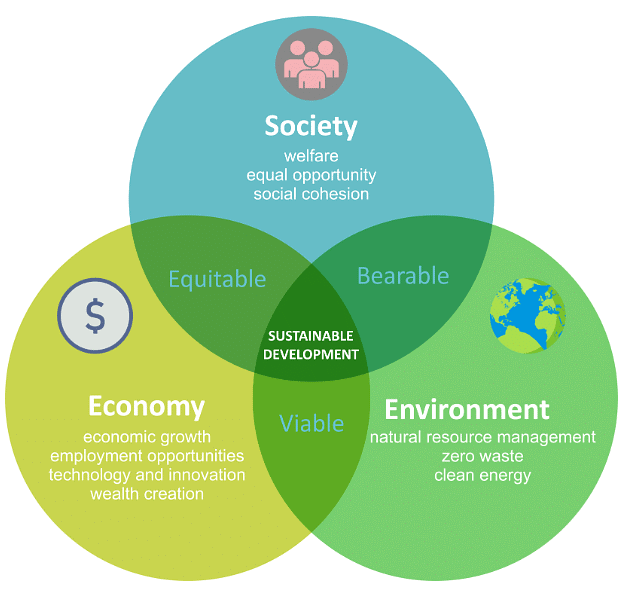
- Therefore, there is a vital need to align developmental activities with environmental concerns.
- Ensuring the sustainability of development options under consideration is highly desirable.
- To achieve this, it is crucial to identify and characterize environmental consequences early in the project cycle.
- These consequences should be incorporated into the project design to create a harmonious balance between development and environmental well-being.
[Question: 957673]
Environmental Impact Assessment(EIA)
- Environmental Impact Assessment (EIA) is a crucial tool for planners, aiming to aligndevelopment activities with environmental concerns.
- EIA seamlessly integrates environmental considerations from the initiation phase, preparing feasibility reports.
- This integration allows for the inclusion of environmental concerns and mitigation measures during project development.
- EIA plays a preventative role, potentially avoiding future liabilities or costly alterations in project design.
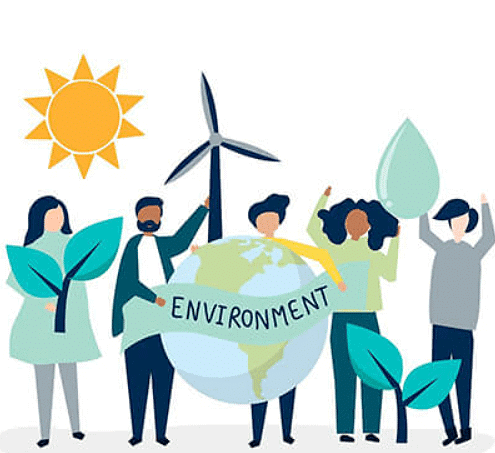
- The primary objective of EIA is to anticipate and address potential environmental issues during the project's planning and design stages.
- EIA, coupled with an Environment Management Plan (EMP), assists planners and government authorities in decision-making by identifying key impacts and formulating mitigation measures.
- Widely recognized as an integral component of sound decision-making, EIA is an accepted planning tool.
- The Ministry of Environment & Forests (MOE&F) has implemented policy initiatives and legislation to prevent indiscriminate exploitation of natural resources.
- These efforts aim to promote the integration of environmental concerns in developmental projects.
- The Notification on Environmental Impact Assessment (EIA) of developmental projects in 1994, under the Environment (Protection) Act, 1986, is a significant stride in this direction.
[Question: 957673]
Indian Policies Requiring EIA
- Environmental Impact Assessment (EIA) in India began in 1976-77 when the Planning Commission tasked the Department of Science and Technology with evaluating river-valley projects for environmental considerations.
Initially, the assessment covered projects requiring approval from the Public Investment Board, but these were administrative decisions lacking legislative support.
In 1986, the Government of India enacted the Environment (Protection) Act to address environmental concerns comprehensively.
As part of the Act's objectives, a decision was made to make environmental impact assessment a statutory requirement.

Under the Environment (Protection) Act of 1986, the Government issued various notifications related to specific geographical areas, extending beyond the general EIA.
These notifications included prohibitions on industries within specific belts, restrictions in ecologically sensitive regions, and the classification of coastal stretches as coastal regulation zones with corresponding prohibitions.
Notable instances include restrictions in the Raigarh district of Maharashtra, the Doon Valley, coastal regulation in various stretches, Dahanu Taluka in Maharashtra, specified areas in the Aravalli Range, and the north-western region of Numaligarh in Assam.
The measures aimed to regulate industrial and other activities that could lead to pollution and congestion, providing a comprehensive framework for environmental protection in diverse regions.
[Question: 957594]
The EIA Cycle and Procedures
The Environmental Impact Assessment (EIA) process in India comprises the subsequent stages:
Screening
- The screening process is conducted to determine whether a project necessitates environmental clearance in accordance with statutory notifications. Screening criteria are based on:
- Scales of investment,
- Type of development, and
- Location of development.
- A project requires statutory environmental clearance only if the provisions of the Environmental Impact Assessment (EIA) notification and/or one or more statutory notifications mentioned above encompass it.
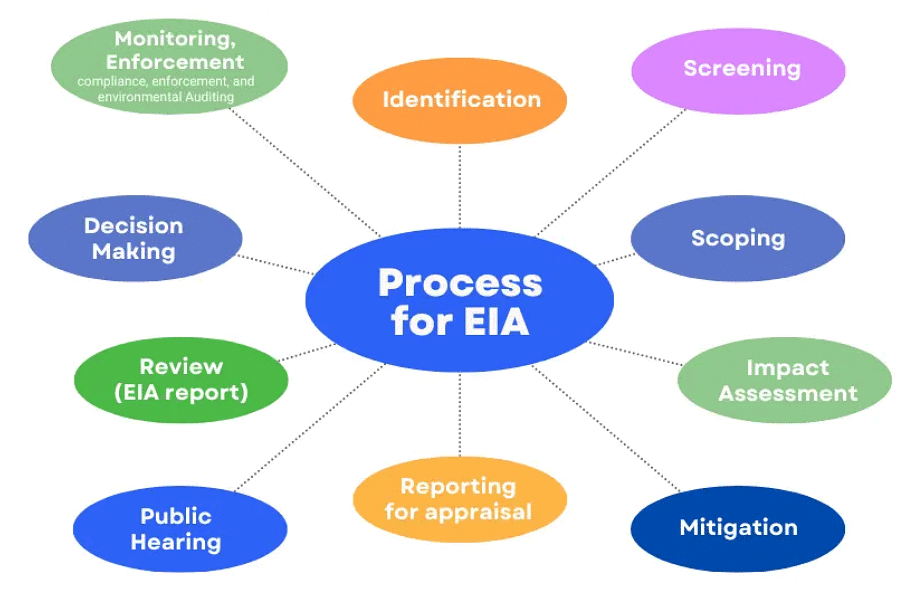
Scoping
Scoping involves detailing the terms of reference for the EIA. This task is undertaken by the consultant in collaboration with the project proponent, with guidance, if necessary, from the Impact Assessment Agency.
The Ministry of Environment and Forests has issued sector-wise guidelines (comprehensive terms of reference) delineating significant issues to be addressed in EIA studies.
Quantifiable impacts are assessed based on magnitude, prevalence, frequency, and duration, while non-quantifiable impacts (e.g., aesthetic or recreational value) are evaluated through socio-economic criteria.
Once areas with potentially significant impacts are identified, the baseline status of these areas should be monitored. Subsequently, predictions should be made regarding the anticipated changes in these areas due to the construction and operation of the proposed project.
[Question: 957598]
Baseline Data
Impact Prediction
Impact prediction involves mapping the environmental consequences of the significant aspects of the project and its alternatives. Predicting environmental impact can never be done with absolute certainty, underscoring the importance of considering all possible factors and taking precautions to reduce uncertainty to the greatest extent possible.
 The project's impacts should undergo assessment in the following categories:
The project's impacts should undergo assessment in the following categories:
Air
- Changes in ambient levels and ground-level concentrations resulting from total emissions from point, line, and area sources.
- Effects on soils, materials, vegetation, and human health.
Noise
- Changes in ambient levels due to noise generated by equipment and vehicle movement.
- Effects on fauna and human health.
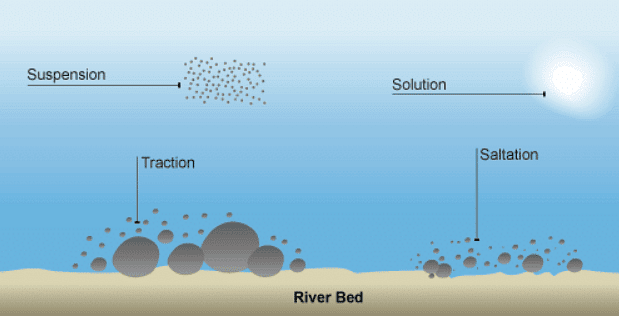 Modes of Sediment Transport
Modes of Sediment Transport
Water
- Availability to competing users.
- Changes in quality.
- Sediment transport.
- Ingress of saline water.
Land
- Changes in land use and drainage patterns.
- Changes in land quality, including the effects of waste disposal.
- Changes in shoreline/riverbank and their stability.
Biological
- Deforestation/tree-cutting and shrinkage of animal habitat.
- Impact on fauna and flora (including aquatic species, if any) due to contaminants/pollutants.
- Impact on rare and endangered species, endemic species, and migratory paths/routes of animals.
[Question: 957595]
Impact on Breeding and Nesting Grounds
1. Socio-Economic: Effect on the local community, involving demographic alterations.
2. Impact on Economic Status:
- Impact on humanhealth.
- Impact of increasedtraffic.
 Breeding and Nesting Grounds
Breeding and Nesting Grounds
Assessment of Alternatives, Delineation of Mitigation Measures and Environmental Impact Assessment Report
Identify and compare potential alternatives for both project location and process technologies, considering a no-project option. Rank alternatives to select the most environmentally favorable option.
Develop a mitigation plan for the chosen option, supplemented with an Environmental Management Plan (EMP) for enhanced environmental practices. The EMP is crucial for monitoring clearance conditions, with detailed monitoring specifics included.
Provide clear information in the Environmental Impact Assessment (EIA) report on different environmental scenarios:
- Without the project.
- With the project.
- With project alternatives. Transparently present uncertainties associated with the assessment.
[Question: 957595]
Public Hearing
Legal provisions mandate that the public be notified and engaged in the evaluation of a proposed development following the conclusion of the Environmental Impact Assessment (EIA) report.
Anyone anticipated to be impacted by the proposed project has the right to obtain the Executive Summary of the EIA. Potentially affected individuals may encompass:
- Genuine local residents.
- Local associations.
- Environmental groups actively engaged in the area.
- Any other individual situated at the project site or sites of displacement.
 Environmental GroupsThese individuals are entitled to present oral or written suggestions to the State Pollution Control Board, providing them with an opportunity to contribute to the decision-making process.
Environmental GroupsThese individuals are entitled to present oral or written suggestions to the State Pollution Control Board, providing them with an opportunity to contribute to the decision-making process.
Environment Management Plan
- Delineation of mitigation and compensation measures for all identified significant impacts.
- Delineation of unmitigated impacts.
- Physical planning, including a work program, time schedule, and locations for implementing mitigation and compensation systems.
- Financial planning for implementing mitigation measures demonstrated through budgetary estimates and inclusion in the project budget.
[Question: 957601]
Decision Making
- The decision-making process involves consultation between the project proponent (assisted by a consultant) and the impact assessment authority (assisted by an expert group if necessary).
- The decision on environmental clearance is reached through several steps, including the evaluation of the Environmental Impact Assessment (EIA) and Environmental Management Plan (EMP).
Monitoring the Clearance Conditions
- Monitoring should occur during both the construction and operation phases of a project. This is not only to ensure compliance with commitments but also to observe whether the predictions in the EIA reports were accurate.
- In cases where impacts exceed predicted levels, corrective action should be taken. Monitoring enables the regulatory agency to review the validity of predictions and the conditions of implementing the Environmental Management Plan (EMP).
Salient Features of the 2006 Amendment
These features include the decentralization of environmental clearance for developmental projects into two categories: Category A and Category B.
- Category A Projects:
- Appraised at the national level by the Impact Assessment Agency (IAA) and the ExpertAppraisal Committee (EAC).

- Category B Projects:
- Appraised at the state level by the State Level Environment Impact Assessment Authority(SEIAA) and State Level Expert Appraisal Committee (SEAC).
After the 2006 Amendment, the Environmental Impact Assessment (EIA) cycle involves four stages:
- Screening
- Scoping
- Public hearing
- Appraisal
Category A projects necessitate mandatory environmental clearance and do not undergo the screening process. On the other hand, Category B projects undergo the screening process and are classified into two types:
- Category B projects (Mandatory requires EIA)
- Category B projects (Do not require EIA)
While Category A projects and Category B projects (Mandatory requires EIA) undergo the complete EIA process, Category B projects (Do not require EIA) are excluded from the complete EIA process.
[Question: 957601]
Environment Impact Assessment (EIA) Notification 2020
The Environment Impact Assessment (EIA) Notification 2020, introduced under the Environment (Protection) Act, 1986, by the Ministry of Environment, Forest and Climate Change (MoEF&CC), replaces the 2006 notification.
Key provisions of the 2020 EIA Notification include:
- Reduction of the public hearing period from 30 to 20 days.
- Exemption of certain project classifications (A, B1, and B2) from public scrutiny.
- Changes in post-clearance compliance reporting, transitioning from semi-annual to annual submissions.
- Requirement for project proponents to exclusively prepare the EIA report.
- Omission of reporting violations and non-compliance by the public.
- Introduction of post-facto clearance, allowing projects operating without prior environmental clearance to apply for it.
- Imposition of penalties on firms found violating their establishment terms.
Components of EIA
The primary distinction between Comprehensive EIA and Rapid EIA is the temporal scope of the data supplied.
Assessment of damage to terrestrial flora and fauna includes the evaluation of the impact of air pollution and changes in land use and landscape.
 Terrestrial Flora and Fauna
Terrestrial Flora and Fauna
Assessment of damage to aquatic and marine flora and fauna, including commercial fishing, involves analyzing the consequences of physical disturbances and alterations.
Prediction of biological stresses within the impact zone of the proposed project anticipates potential impacts on the local ecosystem.
Delineation of mitigation measures involves outlining comprehensive strategies to prevent and/or reduce potential damage.
[Question: 957865]
Land Environment
- It studies on soil characteristics, existing land use, topography, landscape, and drainage patterns within the impact zone.
- Estimation of project impacts on land use, landscape, topography, drainage, and hydrology.
- Identification of potential utility of treated effluent in land application and assessment of impacts.
- Estimation and characterization of solid wastes with delineation of environmentally compatible disposal options.
 Land Environment
Land Environment
Socio-economic and Health Environment
- Collection of demographic and socio-economic data.
- Collection of epidemiological data, including studies on endemic diseases and morbidity rates in the population within the impact zone.
- Projection of anticipated changes in socio-economic and health aspects due to the project.
- Delineation of measures to minimize adverse impacts, including considerations for traffic congestion.
- Assessment of the impact on significant historical, cultural, and archaeological sites/places in the area.
- Evaluation of economic benefits arising from the project.
- If applicable, evaluation of rehabilitation needs, with a particular focus on scheduled areas.
[Question: 957867]
Risk Assessment
Identifying hazards through the use of hazard indices, inventory analysis, dam break probability, and Natural Hazard Probability, among other methods.
Conducting Maximum Credible Accident (MCA) analysis to pinpoint potential hazardous scenarios.
Analyzing consequences of failures and accidents, such as fire, explosion, hazardous releases, and dam breaks.
Undertaking Hazard & Operability (HAZOP) studies for a comprehensive understanding.
Assessing risk based on the above evaluations.
Developing an onsite and offsite Disaster Management Plan for the project-affected area.
 Environmental Management System
Environmental Management System
Environment Management Plan
Outlining mitigation measures, encompassing prevention and control strategies for each environmental component, as well as a rehabilitation and resettlement plan.
Defining a monitoring scheme to ensure compliance with conditions.
Detailing an implementation plan, including scheduling and resource allocation.
[Question: 957866]
Key Elements of an Initial Project Description and Scoping
Key environmental issues related to project characteristics are outlined in Sectoral Guidelines published by the Ministry of Environment, Forest and Climate Change (MoEF) periodically.
The Initial Project Description (IPD) serves as a crucial document, providing essential information for project screening and scoping.
Specific details covered by the IPD include:
- Location and current land use, along with contours, and conformity to proposed development plans.
- Details of the proposed project activity, including project cost.
- Outline of key project elements during pre-construction, construction, and operation phases, as per the attached questionnaire.
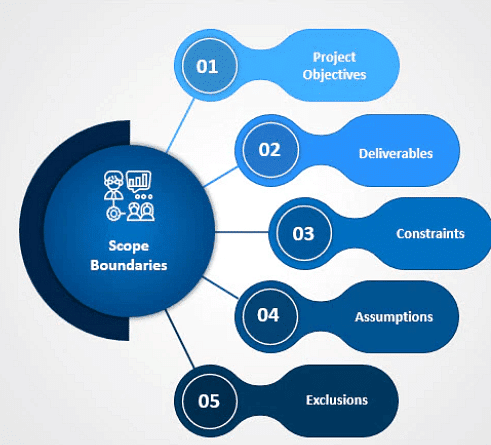 Project Scope
Project Scope
The IPD may also encompass:
- Off-site activities.
- Associated activities.
- Expected project-induced activities.
- Project activities are presented as a PERT chart and processes as a Flowchart, delineating unit processes with input-output.
This comprehensive information aims to facilitate the reviewer's task in assessing crucial aspects of project location and characteristics.
After suitable scoping, the project proponent should provide environmental information for consideration in the detailed Environmental Impact Assessment (EIA). The reviewer, in evaluating the report, should focus on critical aspects related to project location and characteristics.
[Question: 957866]
Project Location(s)
The effective approach to minimizing the requirement of mitigation measures involves careful site selection.
Proposed project locations should undergo a review based on both regulatory and non-regulatory criteria.
Project siting restrictions are contingent on the sensitivity of the surrounding environment, assessed about proximity to places/sites listed in identified ecologically sensitive zones (ESZ) notified by MOEF.
Siting criteria delineated by MOEF include:
- Prime agricultural land/forest should preferably not be converted into an industrial site.
- Acquired land should be minimal but sufficient for a green belt where treated wastewater, if suitable, could be utilized.
- Adequate space for storing solid waste, potentially available for reuse in the future.
- The layout and form of the project must harmonize with the landscape without unduly affecting scenic features.
- Associated townships, if any, should provide for a photographic barrier and consider the predominant wind direction.
 Logo of MOEF
Logo of MOEF
Additional specified distances to be maintained:
- Coastal Areas: at least 1/2 km from the high tide line.
- Estuaries: At least 200 meters from the estuary boundaries.
- Flood Plains of Riverine Systems: At least 500 meters from flood plains or modified flood plains.
- Transport/Communication System: At least 500 meters from highways and railways.
- Major Settlements (3,00,000 population): At least 25 km from the projected growth boundary.
Review the proposed project location concerning:
- Ambient air, water, and noise quality standards.
- Critically polluted areas.
- Natural disaster-prone areas, ecologically sensitive areas.
- Availability of water and other critical infrastructures like electricity, roads with adequate width and capacity.
[Question: 957866]
Procedure for Public Hearing
A. Process of Public Hearing: Those applying for environmental clearance for projects must submit their application to the relevant State Pollution Control Board.
B. Notice of Public Hearing:
- The State Pollution Control Board is responsible for issuing a notice for an environmental public hearing. This notice should be published in at least twonewspapers widely circulated in the region around the project, with one publication in the vernacular language of the local area. The notice should include the date, time, and place of the public hearing. Public suggestions, views, comments, and objections are to be invited within thirty days from the date of publication.
- All individuals, including bona fide residents, environmental groups, and others situated at the project site or sites of displacement/impact, have the opportunity to participate in the publichearing. They can provide oral/written suggestions to the State Pollution Control Board.

C. Composition of Public Hearing Panel:
The composition of the Public Hearing Panel may include the following:
1. Representative of the State Pollution Control Board.
2. District Collector or their nominee.
3. Representative of the State Government dealing with the subject.
4. Representative of the Department of the State Government dealing with the Environment.
5. Not more than three representatives of the area, nominated by the District Collector, who are senior citizens.
[Question: 957866]
Environmental Impact Assessment in the Indian System - Drawbacks and Recommendations
Drawbacks
A. Applicability
- Several projects with significant environmental impacts are exempted from the notification, either because they are not listed in Schedule 1 or their investments are less than specified in the notification.
B. Composition of Expert Committees and Standards:
The team formed for conducting EIA studies lacks expertise in various fields such as environmentalists, wildlife experts, anthropologists, and social scientists to study the social impact of the project.
There is a lack of exhaustive ecological and socio-economic indicators for impact assessment.

C. Public Hearing
Public comments are not considered at the early stage, often leading to conflicts in the later stages of project clearance.
Several projects with significant impacts are excluded from the mandatory public hearing process.
Documents that the public is entitled to are seldom available on time.
Data collectors do not respect the indigenous knowledge of local people.
[Question: 957866]
D. Quality
A major concern with the environmental clearance process is related to the quality of EIA reports. Reports are generally incomplete and provided with false data.
EIA reports often ignore several aspects during assessments, and significant information is found to be omitted.
Many EIA reports are based on single-season data and are not adequate to determine whether environmental clearance should be granted.
The responsibility of commissioning the preparation of the EIA lies with the project proponent, creating a potential bias in the assessment process.
The EIA document is bulky and technical, making it challenging to decipher for effective decision-making.
Cases of fraudulent EIA studies are prevalent, with erroneous data being used and the same facts applied to different places due to the lack of a centralized baseline data bank.
Lack of accreditation for EIA consultants allows those with a track record of fraudulent cases to avoid liability for discrepancies. Consultants may tailor information to provide clients with a favorable report, raising concerns about impartiality.
 Environmental Impact Assessment
Environmental Impact Assessment
- Frequently, particularly for strategic industries like nuclear energy projects, Environmental Management Plans (EMPs) are kept confidential due to political and administrative considerations.
- Information regarding the effectiveness and implementation of mitigation measures is frequently omitted.
- Emergency preparedness plans are not sufficiently detailed, and the information is not adequately disseminated to the communities.
[Question: 957866]
Recommendations
- Establishment of an autonomous EIA Authority
- Requirement for comprehensive sector-wide EIA
- Establishment of an information desk
- Establishment of a centralized baseline data bank
- Transparent sharing of all project-related information, from notification to clearance, with local communities and the general public.
A. Applicability
All projects with the potential for significant alteration of ecosystems must undergo the environmental clearance process without exception. No industrial developmental activity should be allowed in ecologically sensitive areas.
 Ecologically Sensitive Zones
Ecologically Sensitive Zones
B. Public Hearing
Public hearings should apply to all previously exempt categories of projects with environmental impacts.
C. Quality
- The focus of EIA should shift from the utilization and exploitation of natural resources to the conservation of natural resources.
- Current EIA reports are weak in assessing the biological diversity of a project area and its consequent impacts. Specific guidelines and necessary amendments should address this gap.
- The checklist needs to encompass impacts on agricultural biodiversity, biodiversity-related traditional knowledge, and livelihoods.
- All EIA reports should transparently state the adverse impacts a proposed project will have, in a separate chapter and not hidden within technical details.
- Subcomponents or subsidiary reports of EIA reports (e.g., Assessments of Biodiversity impacts) should be publicly accessible as standalone reports with the EIA, available on the websites of the Ministry of Environment, Forest and Climate Change (MOEF).
 Biodiversity
Biodiversity
- EIAs should be based on comprehensive studies carried out over at least one year. Single-season data is not adequate to fully understand the impact of the proposed project, especially regarding environmental parameters like biodiversity.
- The preparation of an EIA must be entirely independent of the project proponent. One option for this could be the creation of a central fund for EIAs, containing fees deposited by project proponents while an EIA is conducted for their proposed project.
- State and central governments should maintain a list of credible, independent, and competent agencies capable of carrying out EIAs. Similarly, EIA consultants providing false reports should be blacklisted.
- A national-level accreditation for environmental consultancy should be adopted.
[Question: 957866]
D. Grant of Clearance
- The notification needs to clarify that the provision for site clearance does not imply any commitment on the part of the Impact Assessment agency to grant full environmental clearance.
- Prior informed consent of local communities and urban wards or residents' associations needs to be made mandatory before the grant of environmental clearance. The consent should be from the full general body.
- The language used to specify conditions of clearance must be clear and specific.
E. Composition of Expert Committees
- The present executive committees should be replaced by experts from various stakeholder groups who are reputable in environmental and other relevant fields.
- The process of selecting these committees should be open and transparent. The minutes, decisions, and advice by these committees should be open to the public.

F. Monitoring, Compliance, and Institutional Arrangements
- The EIA notification needs to incorporate an automatic withdrawal of clearance if the conditions are violated, introducing more stringent punishment for non-compliance. Currently, the EIA notification limits itself to the stage when environmental clearance is granted.
- The Ministry of Environment, Forest and Climate Change (MOEF) should set up more regional offices with advisory expert committees, each with smaller areas of jurisdiction, to effectively monitor compliance with clearance conditions.
- A robust monitoring mechanism should be established by the state department to address compliance with both sets of clearance conditions together and to take punitive action against the project proponent in case of non-compliance.
- Local communities should be involved in the formal monitoring and reporting process of compliance, currently done by the regional offices of the MOEF.
[Question: 957866]
G. Redressal
- The composition of the National Green Tribunal (NGT) needs to be changed to include more judicial experts from the field of the environment.
- Citizens should have access to the authority for redressal of all violations of the Environmental Impact Assessment (EIA) notification as well as issues relating to non-compliance.
 Logo of National Green Tribunal
Logo of National Green Tribunal
H. Capacity Building
NGOs, civil society groups, and local communities need to build their capacities to use the EIA notification for better decision-making on projects that can impact their local environments and livelihoods. Capacities should be built proactively and effectively to use the notification rather than responding in a manner seen as negative or unproductive.
List of Environmentally Sensitive Places
- Religious and historic places
- Archaeological monuments/sites
- Scenic areas
- Hill resorts/mountains/hills
- Beach resorts
- Health resorts
- Coastal areas rich in corals, mangroves, breeding grounds of specific species
- Estuaries rich in mangroves, breeding ground of specific species
- Gulf areas
- Biosphere reserves
- Nationalparks and wildlife sanctuaries
- Natural lakes, swamps
- Seismic zones
- Tribal settlements
- Areas of scientific and geological interest
- Defense installations, especially those of security importance and sensitive to pollution
 Gir National Forest Park
Gir National Forest Park
- Border areas (international)
- Airports
- Tiger reserves/elephant reserves/turtle nesting grounds
- Habitat for migratory birds
- Lakes, reservoirs, dams
- Streams/rivers/estuaries/seas
- Railway lines
- Highways
- Urban agglomeration
[Question: 957866]
Environment Supplement Plan (ESP)
- An Environmental Supplemental Plan (ESP) is an environmentally beneficial project or activity voluntarily undertaken by an alleged violator of the Environmental Impact Assessment Notification, 2006 as part of the environmental clearance process.
- "Environmentally beneficial" means an ESP must remediate, improve, protect the environment, or reduce risks to public health or the environment.
A. Proposals under ESP
- ESP allows violator companies to continue their activities by paying a financial penalty, which is then invested in an "environmentally beneficial project or activity" for an affected target group of stakeholders.
B. Advantages
- Many developmentalprojects currently stalled due to non-compliance with the EIA regime or improper EIA preparation could be revived through ESP.
- The "Bad Loans" issue plaguing the banking sector could be substantially resolved by reviving stalled projects.
C. Disadvantages
- ESP is seen as an attempt to legalize EIA violations and gain corporate confidence, potentially allowing violators to damage the environment and circumvent the EIA process.
- Around 41% of cases filed in the National Green Tribunal (NGT) involve faults with an EIAassessment, indicating a significant issue with EIA violations in developmental projects.
- Critics argue that ESP indirectly allows the pardoning of violations, contradicting the "Polluters Pay Principle" and promoting a "Pay and Pollute" principle.

- The Ministry of Environment, Forest and Climate Change (MoEFCC) stated that the notification has legal basis in two judgments, but neither of them condones post facto regularization of EIAviolations nor prescribes a way out for violators.
- Valuation of environmentalloss cannot be justly compensated by pecuniarypayment from the violator.
- Doubts exist about the proper collection and utilization of the fine amount for restoration, as no mechanism has been proposed to utilize the collected funds.
- ESP is criticized for providing an escapemechanism to violators, allowing them to circumvent the path of EIA clearance by paying a penalty through specific investment activities.
[Question: 957866]
PARIVESH (Pro-Active and Responsive facilitation by Interactive, Virtuous, and Environmental Single-window Hub)
- PARIVESH is a unified environmentalmanagement system, offering a single-window integrated platform for various clearances, including Environment, Forest, Wildlife, and CRZ (Coastal Regulation Zone).
- It introduces a streamlined process with a single registration and sign-in feature for projectproponents, providing a unique ID applicable to all types of clearances required for a specific project.
- The system's key features include a comprehensive single-window interface, allowing proponents to submit applications for diverse clearances such as Environment, Forests, Wildlife, and CRZ.
- PARIVESH aims to enhance efficiency by simplifying clearance procedures and providing an all-encompassing platform for a range of environmental clearances.
Recent Developments
- Supreme Court Ruling: The Supreme Court in 2025 stopped approvals for projects that started without prior environmental clearance.
- New MoEFCC Rules: The Ministry of Environment, Forest and Climate Change introduced simpler biodiversity rules, guidelines for silica sand mining, and procedures for managing hazardous waste to improve Environmental Impact Assessments.
- National Green Tribunal Actions: The National Green Tribunal took action in cases like Deomali Hill and gained powers to address environmental issues directly, strengthening monitoring of Environmental Impact Assessments.
- Environmental Performance: India ranked 176th in the 2024 global Environmental Performance Index, showing weaknesses in biodiversity and pollution metrics, and added four new wetland sites in 2025.
- Proposed EIA Amendments: The government shared draft updates to Environmental Impact Assessment rules for public feedback, but the final version is still pending.
- PARIVESH System Updates: The PARIVESH online system continues to simplify the clearance process for Environmental Impact Assessments, possibly with new features added.
|
743 videos|1444 docs|633 tests
|
FAQs on Shankar IAS Summary: Environmental Impact Assessment- 1 - Famous Books for UPSC Exam (Summary & Tests)
| 1. What is EIA and why is it important in India? |  |
| 2. What are the key components of EIA? |  |
| 3. What are the salient features of the 2006 Amendment to the EIA Notification? |  |
| 4. What are the key elements of an Initial Project Description and Scoping in EIA? |  |
| 5. What are some drawbacks of the Environmental Impact Assessment in the Indian system and what are some recommendations to address them? |  |

















